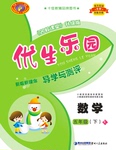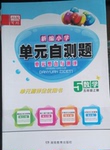题目内容
Last month the first baby-boomers turned 60. The enormous generation born between 1946 and 1964 is heading towards retirement. The coming "demographic cliff" (人口调查)will see vast numbers of skilled workers disappear from the labor force.
The workforce is ageing across the rich world. Within the EU the number of workers aged between 50 and 64 will increase by 25% over the next two decades, while those aged 20 29 will decrease by 20%.
Given that most societies have a tendency to retirement at around 65, companies have a problem of knowledge management, of making sure that the boomers do not leave before they have handed over their expertise along with the office keys and their e-mail address.
If you look hard enough, you can find companies that have begun to adapt the workplace to older workers. The tools they use to achieve are flexible working, telecommuting, and so forth. Some companies spend "a lot of time" on the ergonomics (人类工程学)its factories, making jobs there less tiring.
Likewise, for more than a decade,
Why are firms not working harder to keep old employees? Mostly they are not hanging on to older workers the only way to cope with a falling supply of labor. The participation of developing countries in the world economy has increased the overall supply―whatever the local effect of demographics (人口统计)in the rich countries.
66.According to the passage, the most serious consequence of baby-boomers approaching retirement would be _____.
A.a decrease in the number of 20 to 29 year-olds
B.a loss of knowledge and experience to many companies
C.a continuous increase in the number of 50 to 64 year-olds
D.its influence on the developed world whose workforce is ageing
67.The following are all the measures that companies have adopted to cope with the ageing workforce EXCEPT _____.
A.encouraging former employees to work overseas
B.using alumni networks to hire retired former employees
C.offering more convenience in working hours to older workers
D.making places of work accommodate the needs of older workers
68.In the author's opinion American firms are not doing anything to deal with the issue of the ageing workforce mainly because ______.
A.they have other options to consider
B.they are unwilling to hire older workers
C.they are not sure of what they should do
D.they have not been aware of the problem
69.We can infer from the passage that _____.
A.people in most societies will retire at 65
B.
C.some companies are trying to make work less tiring for older workers
D.people's joining from the developing world has an effect on the rich world
70.What's the best tide of the passage?
A.Old workers in the
B.The first baby-boomers are retiring
C.A worldwide shortage of skilled labor
D.The problems with the companies in the EU

 优生乐园系列答案
优生乐园系列答案 新编小学单元自测题系列答案
新编小学单元自测题系列答案